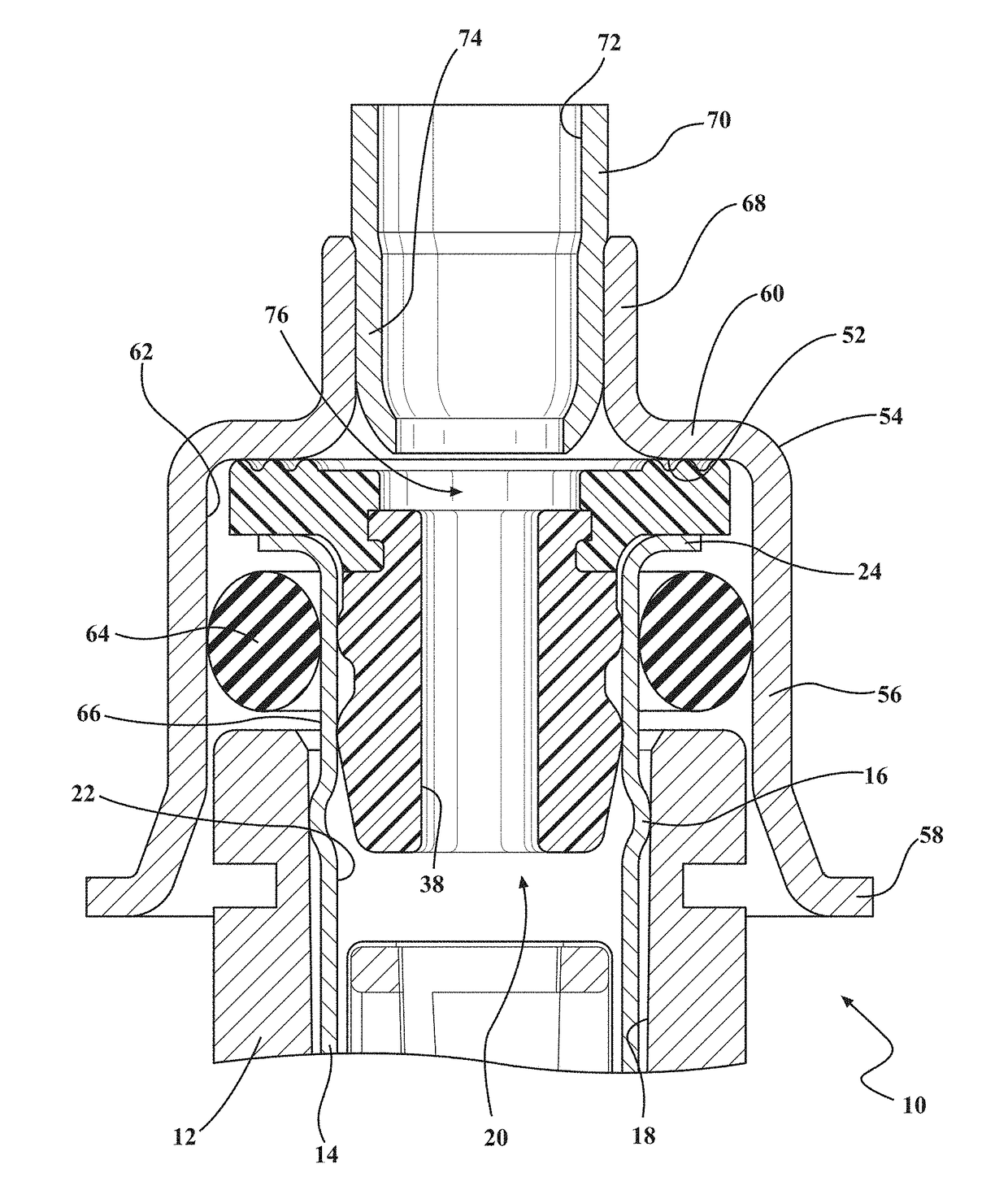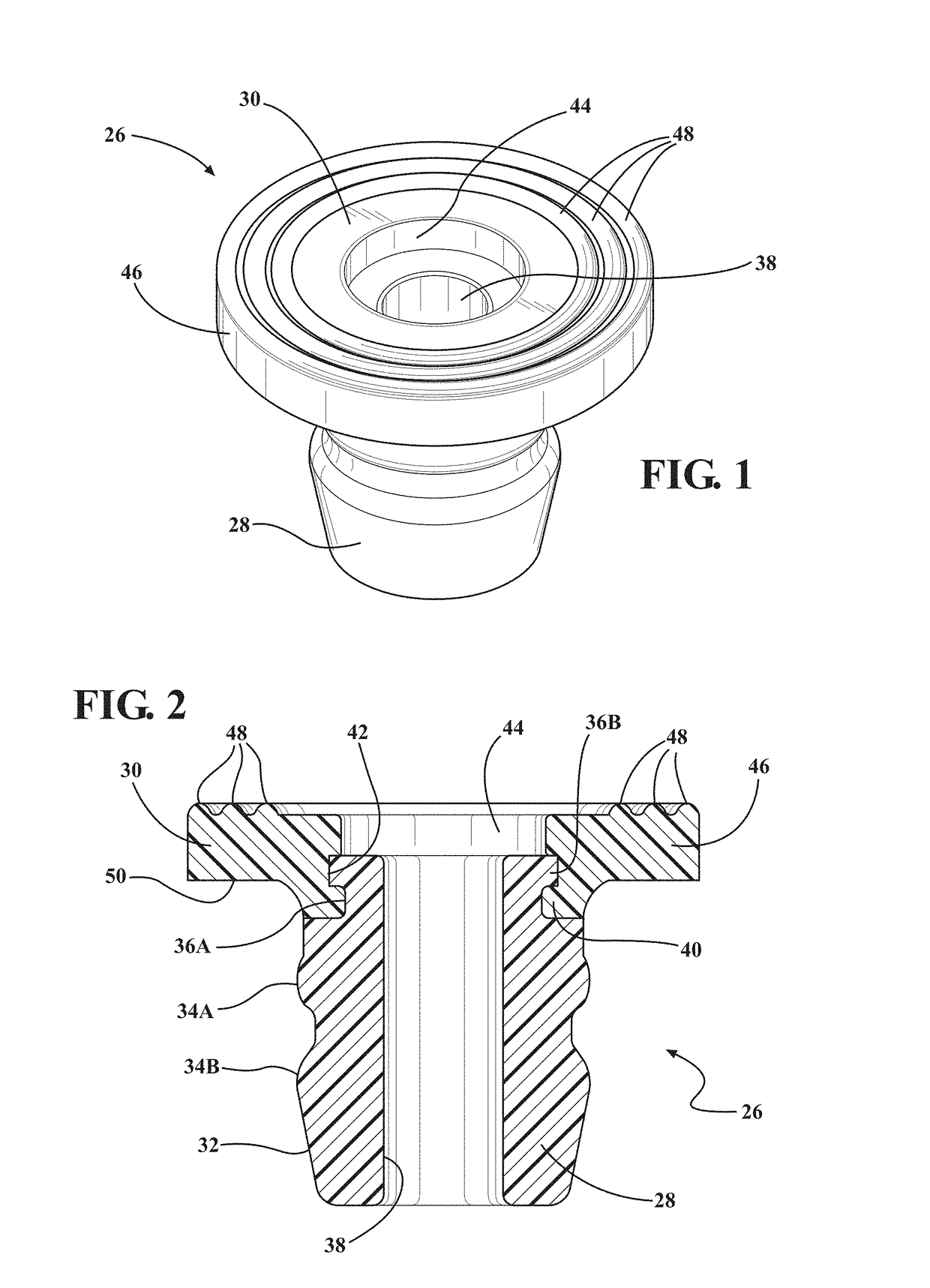Purging and sealing-reductant delivery unit for selective catalytic reduction systems
a delivery unit and catalytic reduction technology, applied in the direction of valve housing, machines/engines, mechanical equipment, etc., can solve the problems of high nitrogen oxide emissions of lean-burn engines, difficult treatment, and damage to injection units, so as to improve the purging efficiency of rdu, prevent component damage during freezing conditions, and improve the sealing performance of the unit
- Summary
- Abstract
- Description
- Claims
- Application Information
AI Technical Summary
Benefits of technology
Problems solved by technology
Method used
Image
Examples
Embodiment Construction
[0021]The following description of the preferred embodiment(s) is merely exemplary in nature and is in no way intended to limit the invention, its application, or uses.
[0022]Referring now to the Figures generally, a portion of an injector having a seal device according to the present invention is shown generally at 10. The injector 10 includes a housing portion 12, which substantially surrounds an upper valve body 14. The housing portion 12 is hollow, and the upper valve body 14 has a notch 16 which is placed against the inner surface 18 of the housing portion 12, and connects the housing portion 12 and the valve body 14 through the use of an interference fit.
[0023]The upper valve body 14 is also hollow, and includes a cavity, shown generally at 20, and an inner surface 22. The upper valve body 14 also includes an upper flange 24, integrally formed as part of the upper valve body 14. Partially disposed in the cavity 20 is a sealing device, shown generally at 26. The sealing device 2...
PUM
 Login to View More
Login to View More Abstract
Description
Claims
Application Information
 Login to View More
Login to View More - R&D
- Intellectual Property
- Life Sciences
- Materials
- Tech Scout
- Unparalleled Data Quality
- Higher Quality Content
- 60% Fewer Hallucinations
Browse by: Latest US Patents, China's latest patents, Technical Efficacy Thesaurus, Application Domain, Technology Topic, Popular Technical Reports.
© 2025 PatSnap. All rights reserved.Legal|Privacy policy|Modern Slavery Act Transparency Statement|Sitemap|About US| Contact US: help@patsnap.com



